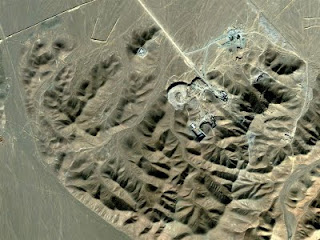Further perspectives of Iranian nuclear program

Official Tehran and the "5 +1" group have shown optimism in connection with the meeting between Iran and the permanent members of UN Security Council + Germany. There is no comprehensive information on the details discussed at the meeting, but noteworthy is Iran's proposal to purchase uranium enriched by 19.75 percent from the "5 +1" countries to use in nuclear laboratories. According to France Agency, Iran agreed to implement part of the uranium enrichment process in Russia. Iran will give Russia uranium enriched by 3.5 percent, which will be enriched under the supervision of the International Atomic Energy Agency (IAEA) to 19.75 percent and back to Iran for use in Tehran's nuclear reactor and laboratory.
The volume of Iran's uranium enriched by 3.5 percent is 1.5 tons. The West suspects that Tehran is secretly enriching uranium by +90 percent to create nuclear weapons, although the enriched uranium is only part of the production of nuclear weapons. Currently, there is no evidence that official Tehran is engaged in implementing other phases, particularly, in producing ballistic missiles with nuclear warheads, explosive detonators and other details. On the other hand, most likely, Iran only wants to acquire technology to produce nuclear weapons. Creating the nuclear weapons, first, is a political move, and for that, Iran should abandon the Nuclear Non-Proliferation Treaty (NPT) of the IAEA at least seven months before starting production of weapons.
Iran's enriching uranium for nuclear plants in Russia makes the West happy. First, because the majority of Iran's uranium reserves will be exported from the country and taken to Russia, thus the probability of secret uranium enrichment is reduced. Secondly, this step may become a pretext for continuing the discussions between Iran and the West.
The meeting between the Iranian Supreme Security Council Secretary General, Saeed Jalili and the representative of the U.S. Department of State, William Burns in Geneva is an unprecedented event, given the lack of diplomatic relations between the two countries for over 30 years. For the first time, the Iranian President has signaled willingness for discussions with the heads of "5 +1" and the Iranian minister has paid a visit to Washington for the first time after the seizure of U.S. Embassy in Tehran in 1980. During his visit to Washington, Iranian Foreign Minister Manouchehr Mottaki expressed his willingness to meet with the U.S. officials, despite the statement by the Iranian Foreign Ministry Press Secretary, Hassan Gashgavi on Oct. 2 that Mottaki has not yet held any official meeting.
In any case, the West does not have any reason for optimism. It is impossible to say anything specific about why Iran has taken this step. So far, the scandal has not yet subsided concerning the construction of a secret uranium enrichment plant in the Iranian city of Gum, which arose during the plenary meeting of the UN General Assembly, held in late September. On Oct. 1, U.S. President Barack Obama has expressed optimism about the last meeting of Iran with the countries of the "5 +1" and stated that "this step of Tehran is not enough and Iran must take a pragmatic step."
A total of 3,000 centrifuges were installed at the factory in the Gum city. Tehran stated that Iran will create the necessary conditions for the IAEA delegation to become acquainted with this plant by Oct. 15. However, there is no information about what kind of centrifuges had been installed at the factory. If these 3,000 centrifuges are IR1 type, then Iran can produce the enriched uranium required for creating a nuclear bomb within two years, if it is İR2 - within one year, and if the centrifuges are manufactured by using materials of graphite - within seven months. On the other hand, at least 60,000 centrifuges are required to provide 1,000 MegaWatt-nuclear power plants with fuel. Thus, it is not known what aims Tehran are pursuing by using a factory with 3000 centrifuges.
In any case, still ongoing protests against the results of the presidential elections in Iran, the growing number of differences between persons being in power in the country, people's dissatisfaction with Ahmadinejad due to increasing poverty, unemployment and inflation forces Tehran to make certain concessions to the West.

Comments
Post a Comment